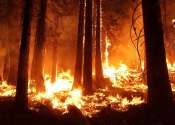How mantle movements shape Earth's surface
The movement of tectonic plates shapes the rocky features of Earth's surface. Plates' convergence can form mountain ranges or ocean trenches, and their divergence can form oceanic ridges. But it's not just the plates themselves ...









